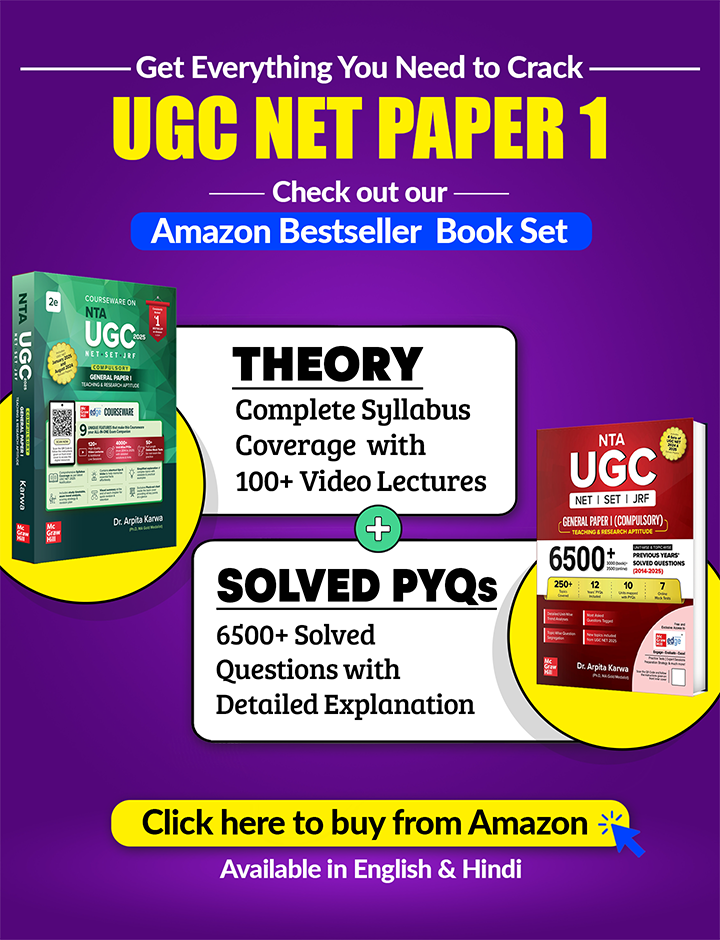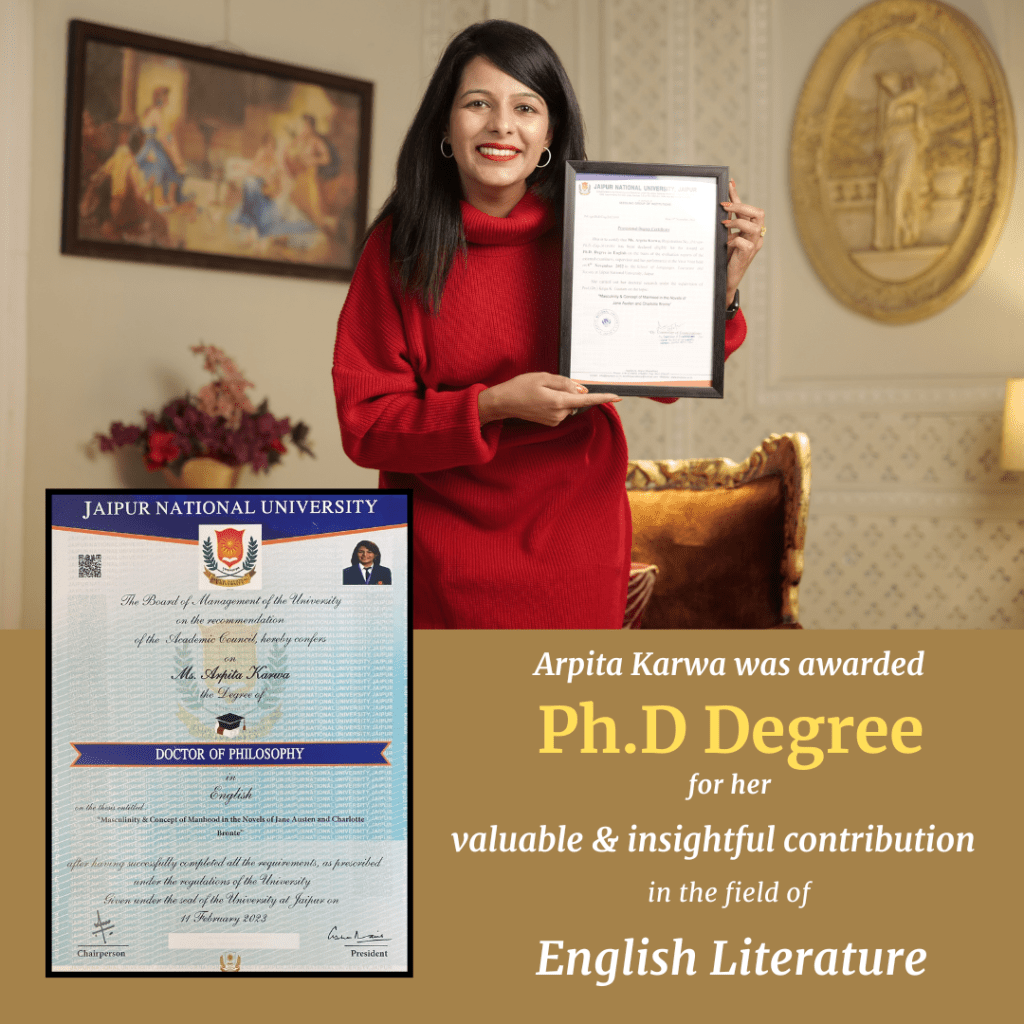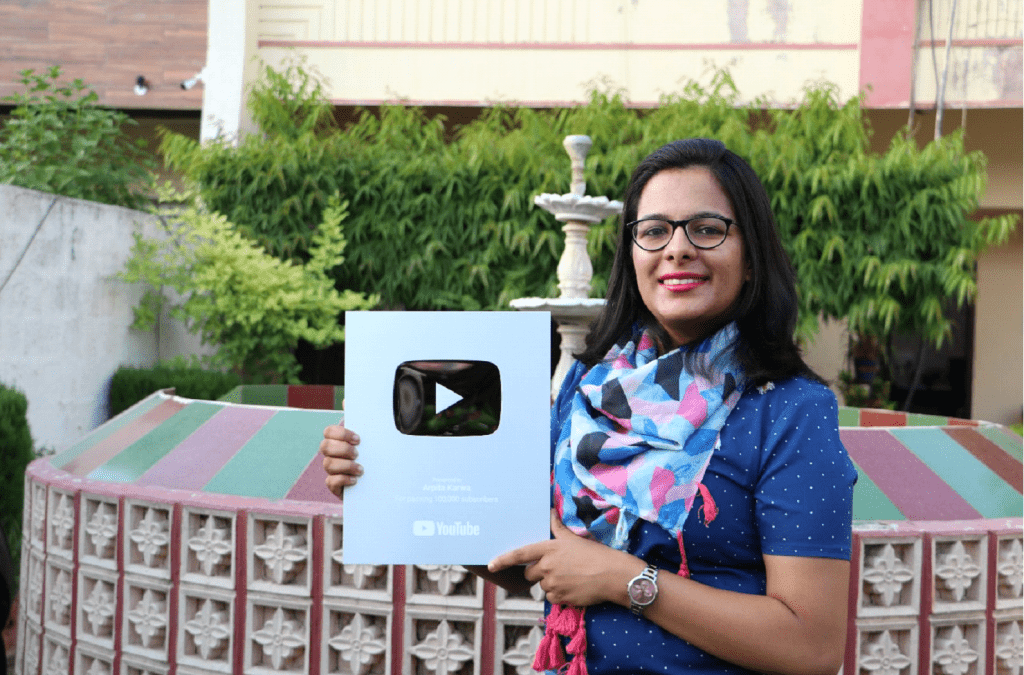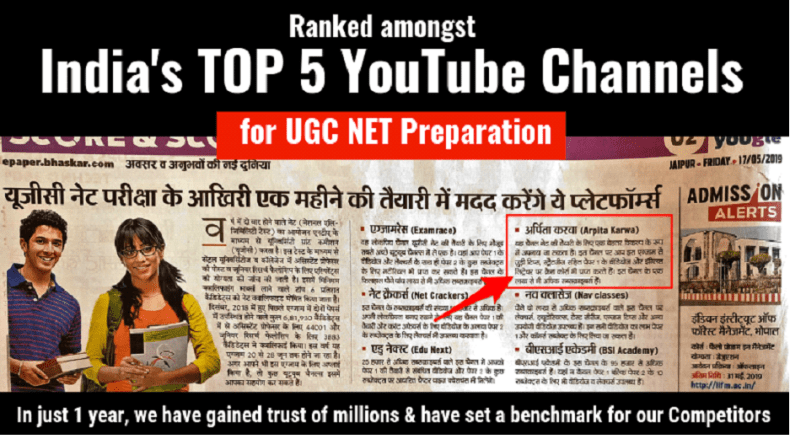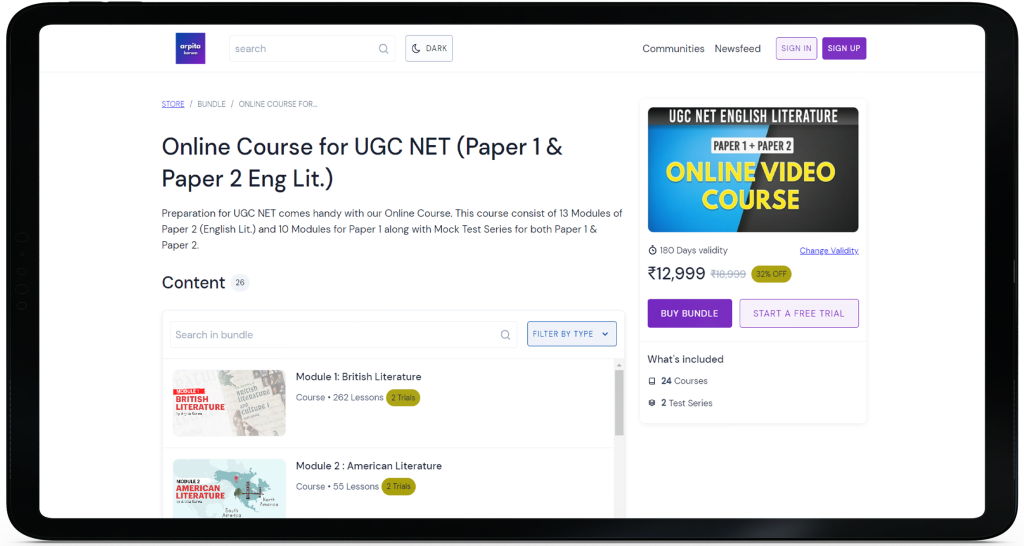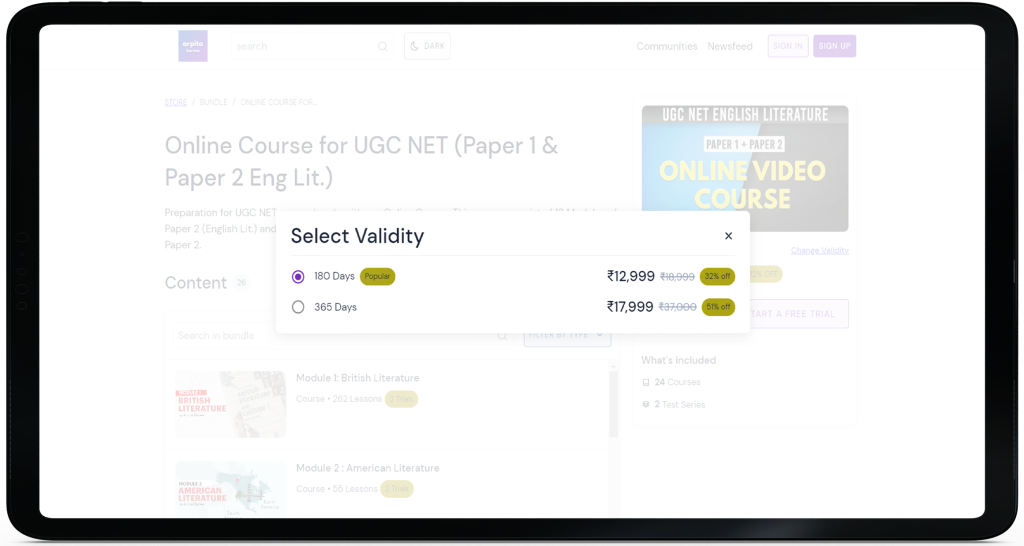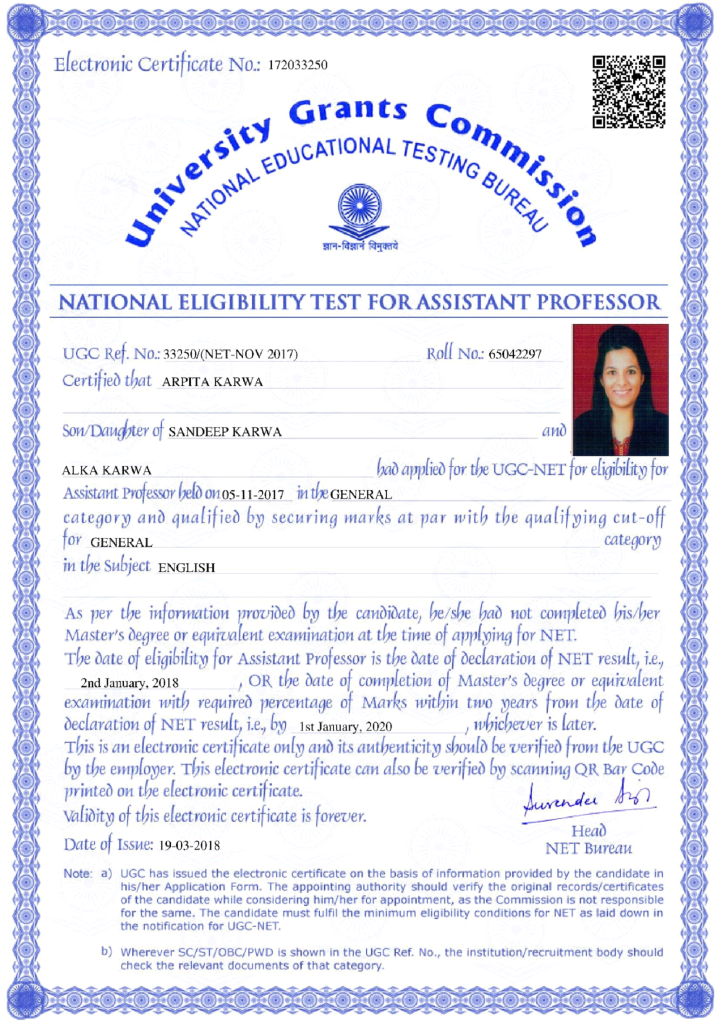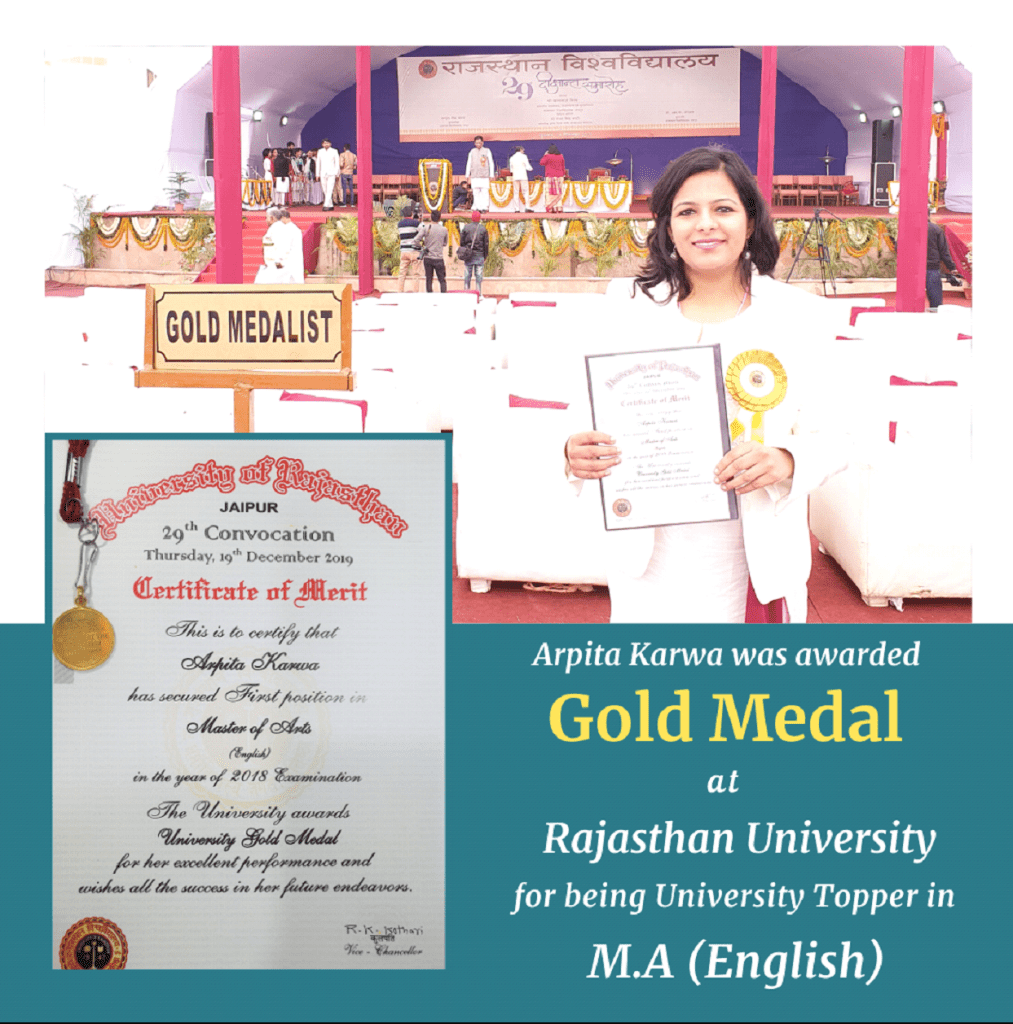September 2020 : Paper 2 (Conducted on 1st Oct 2020 : Evening Shift)
October 18, 2022 2025-10-13 14:11September 2020 : Paper 2 (Conducted on 1st Oct 2020 : Evening Shift)
September 2020: Paper 2 (Conducted on 1st Oct 2020 : Evening Shift)
Q.1) Inductive method differs from deductive method in drawing its conclusion from
[1] Verification
[2] Particular instances
[3] Applications
[4] General truths
Answer – [2]
Q.2) Which of the following information has now been excluded while making an entry for a book in the 8th edition of MLA Handbook for Writers of Research Papers?
[1] Year of publication
[2] Place of publication
[3] Name of the publisher
[4] Omission of subtitle
Answer – [2]
Q.3) Which of the following journals deals with the analysis of only theoretical concepts?
[1] Granta
[2] Manoa
[3] boundary 2
[4] Arethusa
Answer – [3]
Q.4) Which one of the following statements by Roman Jacobson is true about metaphor and metonymy?
[1] Metaphor is alien to the continuity disorder whereas metonymy is alien to similarity disorder
[2] Metaphor is alien to the similarity disorder and metonymy to the continuity disorder
[3] Metaphor is alien to both similarity disorder and continuity disorder and metonymy is common to both
[4] Metaphor is common to both similarity disorder and continuity disorder but metonymy is alien to both
Answer – [2]
Q.5) ‘Who among the following theorists defines novel as “a phenomenon multiform in style and variform in speech and voice”?
[1] E.M. Forster
[2] Henry James
[3] Mikhail Bakhtin
[4] Eric Auerbach
Answer – [3]
Q.6) Who among the following critics is said to have developed the notion of ‘interpretive communities’?
[1] Terry Eagleton
[2] Jane Tompkins
[3] Roland Barthes
[4] Stanley Fish
Answer – [4]
Q.7) Metaphor differs from simile in that
[1] A comparison in metaphor is usually explicit whereas in simile it is implicit
[2] A comparison in metaphor is usually implicit whereas in simile it is explicit
[3] Neither metaphor nor simile is rooted in comparison
[4] Simile involves superimposition while metaphor involves comparison
Answer – [2]
Q.8) The two broad divisions of reality in Plato’s theory of reality are:
[1] visible and assumable
[2] intelligible and opinable
[3] visible and intelligible
[4] intelligible and shadows
Answer – [3]
Q.9) ‘Who among the following refutes Plato’s charge that poets are liars, by arguing that the poet “nothing affirms, and therefore never lieth”?
[1] John Dryden
[2] Philip Sidney
[3] George Puttenham
[4] Richard Hooker
Answer – [2]
Q.10) ‘Who among the following coined the term, ‘aesthetics’?
[1] Arthur Danto
[2] Alexander Baumgarten
[3] Immanuel Kant
[4] David Hume
Answer – [2]
Q.11) Who among the following drew attention to the role of print languages in enabling the rise and spread of nationalism?
[1] Ernest Gellner
[2] Charles Jenks
[3] Benedict Anderson
[4] Frederic Jameson
Answer – [3]
Q.12) Which one of the following captures accurately the view of Frankfurt School of Critical Theory?
[1] the culture industries in still in their mass audiences a capacity to question and transform
[2] The culture industries engender passivity and conformity among their mass audiences
[3] Power and culture are two distinct modes of social articulation, separate from each other
[4] The analysis of culture should be divorced from politics and power relations
Answer – [2]
Q.13) Which of the following groups of words correctly states the stages of communication as envisioned by Stuart Hall in his essay “Encoding, Decoding”?
[1] Production, transference, circulation, contact, reproduction
[2] Production, circulation, realisation, consumption, reproduction
[3] Production, circulation, distribution, consumption, reproduction
[4] Production, dissemination, transference, consumption, reproduction
Answer – [3]
Q.14) Who among the following held that “the people of Hindustan” are “a race of men lamentably degenerate and base, retaining but a feeble sense of moral obligation…”?
[1] Charles Wilkins
[2] Thomas Macaulay
[3] Charles Grant
[4] David Hare
Answer – [3]
Q.15) Which agency among the following made a distinction between the teaching of English as a skill and the teaching of English literature?
[1] The university Education Commission, 1948-49
[2] The Secondary Education Commission, 1952-53
[3] Indian Universities Commission, 1902
[4] The Education Commission, 1964-66
Answer – [4]
Q.16) ‘Which agency among the following was of the view that “use of English- divides the people into two nations, the few who govern and the many who are governed”?
[1] The Kunzru Committee (1955)
[2] The Education Commission (1948)
[3] The Education commission (1964-66)
[4] The working Group (UGC) on Regional Languages (1978)
Answer – [2]
Q.17) Who is the author of The Complete Plain Words?
[1] Samuel Johnson
[2] Daniel Jones
[3] Ernest Gowers
[4] Michael Everson
Answer – [3]
Q.18) ‘Who among the following has coined the term, ‘genderlect’?
[1] Lydia Callis
[2] Kate Burridge
[3] Deborah Tannen
[4] Mary Haas
Answer – [3]
Q.19) “Nice day again, isn’t it?” This sentence is an example of:
[1] Code-switching
[2] Multiple negation
[3] Phatic communication
[4] Nominalization
Answer – [3]
Q.20) Language allows us to talk about the things and events not present in immediate environment.
Which of the following terms describes this property of language?
[1] Arbitrariness
[2] Displacement
[3] Productivity
[4] Discreteness
Answer – [2]
Q.21) In “Advancement of Learning” Francis Bacon divides poetry into three divisions:
[1] Philosophical, religious, imaginative
[2] Epic, dramatic, lyrical
[3] Narrative, representative, allusive
[4] Odes, sonnets. eclogues
Answer – [3]
Q.22) Which one of these essays by Ezra Pound defines an Image as “that which presents an intellectual and emotional complex in an instant of time”?
[1] “A Retrospect”
[2] “The Tradition”
[3] “The Renaissance”
[4] “How to Read”
Answer – [1]
Q.23) Who wrote the essay “Naipaul’s India and Mine” (1984) as a reply to V.S. Naipaul’s An Area of Darkness?
[1] AK. Ramanujan
[2] Nissim Ezekiel
[3] Nayantara Sahgal
[4] Mahesh Dattani
Answer – [2]
Q.24) Which of the following short stories by Jorge Luis Borges has its epigraph from ‘The Anatomy of Melancholy’?
[1] “Borges and I'”
[2] “Death and the Compass”
[3] “The Library of Babel”
[4] “The Garden of Forking Paths”
Answer – [3]
Q.25) How does Christ respond to the Grand Inquisitor’s accusations in Brothers Karamazov?
[1] He kneels before the Grand Inquisitor
[2] He kisses the Grand Inquisitor on his lips
[3] He begins to weep in remorse
[4] He says, “Mea culpa, mea culpa, mea maxima culpa”
Answer – [2]
Q.26) In which short story does the narrator witness a consumptive young man named Mr. Shaynor recreate “The Eve of St. Agnes” in a trance?
[1] E.M. Forster’s “The Eternal Moment”
[2] Rudyard Kipling’s “Wireless”
[3] Somerset Maugham’s “The Creative Impulse”
[4] Aldous Huxley’s “The Bookshop”
Answer – [2]
Q.27) Mr. Pumblechook is a character in:
[1] Little Dorret
[2] Nicholas Nickleby
[3] Hard Times
[4] Great Expectations
Answer – [4]
Q.28) To which of these boarding schools is Jane Eyre sent by her aunt Mrs. Reed?
[1] Lowood School
[2] Hailsham school
[3] Abbey Mount
[4] Greyfriar’s School
Answer – [1]
Q.29) ‘Which of the following short stories by Edgar Allan Poe has a narrator who has a rival with the same name and uncanny physical resemblance?
[1] “Hop-Frog”
[2] “William Wilson”
[3] “The System of Doctor Tarr and Professor Fether”
[4] “The Imp of the Perverse”
Answer – [2]
Q.30) ‘What does the titular Setebos in Robert Browning’s “Caliban upon Setebos” refer to?
[1] The original name of Sycorax, Caliban’s mother
[2] The brutal god in whom Caliban believes
[3] The name of the island in which Caliban lives
[4] The monster whom Caliban is afraid of
Answer – [2]
Q.31) ‘Which of the following poems by Philip Larkin ends with the line “Never such innocence again”?
[1] “An Arundel Tomb”
[2] “MCMXIV”
[3] “This Be the Verse”
[4] “Aubade”
Answer – [2]
Q.32) Which of the following is true in relation to Edmund Spenser’s Faerie Queene?
[1] A letter addressed to Sir Walter Raleigh was prefixed to the 1590 edition of the poem
[2] A letter addressed to Sir Walter Raleigh was appended to the 1590 edition of the poem
[3] A letter addressed to Sir Walter Raleigh was prefixed to the 1596 edition of the poem
[4] A letter addressed to Sir Walter Raleigh was appended to the 1596 edition of the poem
Answer – [2]
Q.33) Who was Milton’s model when he recast the first edition (1667) of Paradise Lost in 10 books to 12 books of the second edition (1674)?
[1] Lucan
[2] Ovid
[3] Virgil
[4] Homer
Answer – [3]
Q.34) In Harold Pinter’s play The Birthday Party, who suggests the idea of having a birthday party?
[1] Meg
[2] Goldberg
[3] Lulu
[4] McCann
Answer – [2]
Q.35) Which of the following characters instruct Faustus in the dark arts?
[1] Robin and Rafe
[2] Cornelius and Valdes
[3] ‘Wagner and Bruno
[4] Old Man and Evil Angel
Answer – [2]
Q.36) What is the content of the suitcases that Lucky carries in the second Act of Waiting for Godot?
[1] Books
[2] Pozzo’s Clothing
[3] Sand
[4] Tiny Skulls
Answer – [3]
Q.37) In which Act of William Congreve’s The Way of the World does the Proviso scene between Mirabell and Millamant take place?
[1] Act l
[2] Act ll
[3] Act Ill
[4] Act IV
Answer – [4]
Q.38) ‘Which of the following statements is correct in relation to Shakespeare’s works?
[1] The Folio edition appeared in the sixteenth century and the ‘quartos’ appeared in the seventeenth century
[2] The ‘quartos’ appeared during his lifetime and the Folio edition appeared posthumously
[3] The Folio edition appeared during his lifetime and the ‘quartos’ appeared posthumously
[4] The ‘quartos’ refer to works written between 1594 and 1599, and the Folio includes works written between 1608 and 1613
Answer – [2]
Q.39) Who is the author of the short play, The Dark Lady of the Sonnets?
[1] Ben Jonson
[2] George Bernard Shaw
[3] Oscar Wilde
[4] Oliver Goldsmith
Answer – [2]
Q.40) While assembling a working bibliography which two of the following reference sources will be particularly useful to a literary researcher?
(A) MLA International Bibliography
(B) New Princeton Encyclopaedia of Poetry and Poetics
(C) Library of Congress Catalogue
(D) Reader’s Guide to Periodical Literature
[1] (A) and (B) only
[2] (B)and (C) only
[3] (A) and (D) only
[4] (C) and (D) only
Answer – [3]
Q.41) ‘Which two of the following periodicals are devoted to feminist theoretical discussion?
(A) Spectrum
(B) Signs
(C) Chrysalis
(D) Transition
[1] (B) and (C) only
[2] (A) and (C) only
[3] (B)and (D) only
[4] (A) and (D) only
Answer – [1]
Q.42) Which two of the following features shall apply to Roland Barthes’s notion of a ‘writerly text’?
(A) In case of writerly text, the reader accepts the meaning without too much reading effort
(B) A writerly text tends to focus attention on what is written
(C) A writerly text makes the reader a producer
(D) A writerly text tends to be self-conscious.
[1] (A) and (B) Only
[2] (B)and (C) Only
[3] (A)and (C) Only
[4] (C) and (D) Only
Answer – [4]
Q.43) A deconstructive reading of a text shows that
(A) A text is to be read always in a context
(B) There is nothing except the text
(C) A text may betray itself
(D) A text may possess an ascertainable meaning
(E) There is an endless postponement of meaning
[1] (A), (B), and (C) Only
[2] (C), (D), and (E) Only
[3] (B), (C), and (E) Only
[4] (B), (C), and (D) Only
Answer – [3]
Q.44) Which two of the following edited the defining work of third-wave feminism, This Bridge Called My Back: Writings by Radical Women of Color?
(A) Audre Lorde
(B) Barbara Smith
(C) Gloria Anzaldua
(D) Cherrie Moraga
[1] (A and (B) Only
[2] (C)and (D) Only
[3] (A)and(C) Only
[4] (B)and (D) Only
Answer – [2]
Q.45) Which two of the following poets defended poetry against Plato’s denigration of Poetry?
(A) John Dryden
(B) P.B. Shelley
(C) TS Eliot
(D) Philip Sidney
[1] (B)and (D) Only
[2] (A) and (B) Only
[3] (B)and (C) Only
[4] (C)and (A) Only
Answer – [1]
Q.46) Which two of the following are Samuel Johnson’s statements about metaphysical poets?
(A) they were singular in their thoughts
(B) they were careful in their diction
(C) they effected combination of dissimilar images
(D) they avoided occult resemblances
[1] (B) and (C)Only
[2] (C)and (D) Only
[3] (B) and (A) Only
[4] (A) and (C) Only
Answer – [4]
Q.47) Which two of the following plays are mentioned in T.S. Eliot’s “Tradition and Individual Talent”?
(A) Agamemnon
(B) Antigone
(C) Othello
(D) Dr. Faustus
[1] (A) and (D) Only
[2] (A) and (C) Only
[3] (B) and (C) Only
[4] (B)and (D) Only
Answer – [2]
Q.48) Which two of the following essays have proved particularly productive in the disciplinary practices of Cultural Studies?
(A) Laura Mulvey, “Visual Pleasure and Narrative Cinema”
(B) Viktor Shklovsky, “Art as Technique”
(C) Sigmund Freud, “The Uncanny”
(D) Stuart Hall, “Encoding/decoding”
[1] (4)and (B) Only
[2] (B)and (C) Only
[3] (A)and (D) Only
[4] (A) and (C) Only
Answer – [3]
Q.49) Which of these following statements are true about Pidgin and Creole?
(A) Pidgin begins as Creole and eventually becomes the first language of a speech community
(B) Creole begins as Pidgin and eventually becomes the first language of a speech community
(C) Pidgin is simple but a rule-governed language developed for communication whereas Creole is free from grammatical rules
(D) Pidgin and Creole evolve successively out of a situation where speakers of mutually unintelligible languages develop a shared language for communication (often basedon one of those languages)
[1] (A) and (B) Only
[2] (B) and (D) Only
[3] (C) and (D) Only
[4] (A) and (D) Only
Answer – [2]
Q.50) Which two of the following words are borrowed into English from Czech?
(A) pistol
(B) robot
(C) sauna
(D) coach
[1] (A) and (B) Only
[2] (A) and (C) Only
[3] (B) and (C) Only
[4] (A) and D) Only
Answer – [1]
Q.51) Which two of the following meanings are admissible for the following sentences :
“You do not know how good oysters taste”
(A) You do not know that oysters taste good as food
(B) You do not know how the oysters taste when cooked
(C) You do not know what the oysters taste when they eat
(D) You do not know how the good oysters taste when they eat
[1] (A and (D) Only
[2] (B)and (C) Only
[3] (B and (D) Only
[4] (C)and (D) Only
Answer – [1]
Q.52) Which two of the following works are Daniel Defoe’s historical narratives?
(A) History of the Rebellion
(B) Meditations on a Broomstick
(C) A Journal of the Plague Year
(D) Memories of a Cavalier
[1] (A) and (B) Only
[2] (B)and (C) Only
[3] (B)and (D) Only
[4] (C) and (D) Only
Answer – [4]
Q.53) Which two of the following are non-fictional works by Peter Ackroyd?
(A) Escape from Earth
(B) The Great Fire of London
(C) The English Ghost
(D) English Music
[1] (A) and (B) Only
[2] (A) and (C) Only
[3] (B)and (C) Only
[4] (B)and (D) Only
Answer – [2]
Q.54) Which two of the following were published in the year 1859?
(A) On the Origin of Species
(B) A Tale of Two Cities
(C) Alice in Wonderland
(D) Silas Marner
[1] (A) and (B) Only
[2] (A) and (C) Only
[3] (B)and (C) Only
[4] (B)and (D) Only
Answer – [1]
Q.55) In his “Self-Reliance” which two qualities does Emerson refer to as “the Chancellors of God” ?
(A) Truth
(B) Cause
(C) Spirit
(D) Effect
[1] (A) and (B) Only
[2] (A) and (C) Only
[3] (B) and (C) Only
[4] (B) and (D) Only
Answer – [4]
Q.56) Which two of the following are part of Virginia Woolf’s collection of autobiographical essays?
(A) “A Will to Word It”
(B) “A Sketch of the Past”
(C) “A Faint Hue of the Past”
(D) “Am I a Snob”
[1] (A) and (B) Only
[2] (A) and (C) Only
[3] (B) and (C) Only
[4] (B)and (D) Only
Answer – [4]
Q.57) Which two of the following novels are part of Paul Auster’s New York Trilogy?
(A) The Book of Illusions
(B) Ghosts
(C) The Locked Room
(D) Winter Journal
[1] (A) and (B) Only
[2] (A) and (C) Only
[3] (B)and (C) Only
[4] (B)and (D) Only
Answer – [3]
Q.58) Joyce Cary’s The Horse’s Mouth, considered by many to be his masterpiece, is part of a trilogy of novels. Which two titles from the following list belong to this trilogy?
(A) Aissa Saved
(B) To Be a Pilgrim
(C) Herself Surprised
(D) Charley Is My Darling
[1] (A) and (B) Only
[2] (B) and (C) Only
[3] (C) and (D) Only
[4] (A) and (D) Only
Answer – [2]
Q.59) Which two of the following are the interludes in John Galsworthy’s The Forsvte Saga (1922)
(A) To Let
(B) Indian Summer of a Forsyte
(C) Awakening
(D) In Chancery
[1] (A) and (B) Only
[2] (A) and (C) Only
[3] (B) and (C) Only
[4] (B) and (D) Only
Answer – [3]
Q.60) Which two poems in the following list are Odes written in the Horatian manner?
(A) Ben Jonson, “To the Immortal Memory and Friendship of that Noble Pair, Sir Lucius Cary and Sir H. Morison”
(B) Andrew Marvell, “Upon Cromwell’s Return from Ireland”
(C) Alexander Pope, “Ode on Solitude”
(D) Alfred Tennyson, “Ode on the Death of the Duke of Wellington”
[1] (A) and (B) Only
[2] (B) and (C) Only
[3] (C) and (D) Only
[4] (A) and (D) Only
Answer – [2]
Q.61) Which two of the following poems by Seamus Heaney come under his Bog Poems?
(A) “Personal Helicon”
(B) “Punishment”
(C) “The Early Purges”
(D) “Tollund Man”
[1] (A) and (B) Only
[2] (A) and (C) Only
[3] (B) and (C) Only
[4] (B) and (D) Only
Answer – [4]
Q.62) In which two of the following plays does the blind seer, Tiresias, appear?
(A) Oedipus the King
(B) Agamemnon
(C) Antigone
(D) Oedipus at Colonus
[1] (A) and (B) Only
[2] (A) and (C) Only
[3] (B) and (C) Only
[4] (C) and (D) Only
Answer – [2]
Q.63) Which two of the following plays were written by John Osborne?
(A) Look Back in Anger
(B) Loot
(C) Funeral Games
(D) Dejavu
[1] (A) and (B) Only
[2] (A) and (C) Only
[3] (A) and (D) Only
[4] (B) and (C) Only
Answer – [3]
Q.64) Match List I with List II
LIST I (INSTITUTIONS)
A. The Bhandarkar Oriental Research Institute
B. Indian Institute of Advanced Study
C. National Library of India
D. Nehru Memorial Museum and Library
LIST II (LOCATIONS)
I. Shimla
II. New Delhi
III. Kolkata
IV. Pune
[1] A-II, B-IV, C-I, D-III
[2] A-III, B-IV, C-I, D-II
[3] A-IV, B-I, C-III, D-II
[4] A-I, B-II, C-IV, D-III
Answer – [3]
Q.65) Match List I with List II
LIST I (Authors)
A. Ferdinand de Saussure
B. Edward Sapir
C. Jacques Derrida
D. Roman Jakobson
LIST II (Works)
I. “Two Aspects of language and two types of Aphasic Disturbances”
II. Of Grammatology
III. A Course in General Linguistics
IV. Language
[1] A-II, B-IV, C-I, D-III
[2] A-IV, B-I, C-III, D-II
[3] A-III, B-IV, C-II, D-I
[4] A-I, B-II, C-IV, D-III
Answer – [3]
Q.66) Match List I with List II
LIST I (Terms)
A. Heteroglossia
B. Heterotopia
C. Grand Narrative
D. Interpellation
LIST II (Theorists)
I. Michel Foucault
II. Louis Althusser
III. Mikhail Bakhtin
IV. Jean-Francois Lyotard
[1] A-II, B-IV, C-I, D-III
[2] A-IV, B-I, C-III, D-II
[3] A-III, B-I, C-IV, D-II
[4] A-I, B-II, C-IV, D-III
Answer – [3]
Q.67) Match List I with List II
LIST I (Critics)
A. L.C.Knights
B. Lionel Trilling
C. Matthew Arnold
D. A.C. Bradley
LIST II (Essays)
I. “The Study of Poetry”
II. “Restoration Comedy: The Reality and the Myth”
III. “Poetry for Poetry’s Sake”
IV. “The Sense of the Past”
[1] A-III, B-IV, C-I, D-II
[2] A-IV, B-I, C-III, D-II
[3] A-II, B-IV, C-I, D-III
[4] A-I, B-II, C-IV, D-III
Answer – [3]
Q.68) Match List I with List II
LIST I (Text)
A. After Amnesia
B. The Indianization of English
C. Masks of Conquest
D. Colonial Transactions
LIST II (Author)
I. Gauri Viswanathan
II. Harish Trivedi
III. G.N.Devy
IV. B.B. Kachru
[1] A-IV, B-III, C-I, D-II
[2] A-II, B-IV, C-I, D-III
[3] A-III, B-IV, C-I, D-II
[4] A-III, B-I, C-IV, D-II
Answer – [3]
Q.69) Match List I with List II
LIST I (Word Borrowed)
A. caste
B. beef
C. blunder
D. flak
LIST II (Source Language)
I. Norse
II. German
III. Portuguese
IV. French
[1] A-III, B-I, C-IV, D-II
[2] A-II, B-IV, C-III, D-I
[3] A-III, B-IV, C-I, D-II
[4] A-II, B-IV, C-I, D-III
Answer – [3]Q.70) Match List I with List II
LIST I (Concepts)
A. Competence/Performance
B. Signifier/Signified
C. Metaphor/Metonymy
D. Content/Expression
LIST II (Theorists)
I. Noam Chomsky
II. Roman Jakobson
III. Louis Hjelmslev
IV. Ferdinand de Saussure
[1] A-III, B-IV, C-I, D-II
[2] A-IV, B-I, C-III, D-II
[3] A-III, B-IV, C-I, D-II
[4] A-I, B-IV, C-II, D-III
Answer – [4]
Q.71) Match List I with List II
LIST I (Author)
A. Pablo Neruda
B. Graham Greene
C. Doris Lessing
D. Vladimir Nabakov
LIST II (Autobiography/Memoir)
I. Under My Skin
II. Speak, Memory
III. Memoirs
IV. A Sort of Life
[1] A-I, B-IV, C-II, D-III
[2] A-IV, B-I, C-III, D-II
[3] A-II, B-IV, C-I, D-III
[4] A-III, B-IV, C-I, D-II
Answer – [4]
Q.72) Match List I with List II
LIST I (Novel)
A. Barnaby Rudge
B. Little Dorrit
C. Nicholas Nickleby
D. Our Mutual Friend
LIST II (Character)
I. Miss La Creevy
II. Miss Dolly
III. Mrs. Boffin
IV. Mrs. Flintwinch
[1] A-I, B-IV, C-II, D-III
[2] A-IV, B-I, C-III, D-II
[3] A-II, B-IV, C-I, D-III
[4] A-III, B-IV, C-I, D-II
Answer – [3]
Q.73) Match List I with List II
LIST I (Poet)
A. John Donne
B. Andrew Marvell
C. George Herbert
D. Henry Vaughan
LIST II (Poem)
I. “The Retreat”
II. “A Valediction of Weeping”
III. “The Garden”
IV. “The Collar”
[1] A-I, B-IV, C-II, D-III
[2] A-IV, B-I, C-III, D-II
[3] A-III, B-IV, C-I, D-II
[4] A-II, B-III, C-IV, D-I
Answer – [4]
Q.74) Which of the following is the correct sequence of stages in empirical research?
(A) Data Collection
(B) Hypothesis
(C) Validation
(D) Findings
(E) Analysis
[1] A,E,D,B,C
[2] B,A,E,C,D
[3] B,C,A,D,E
[4] A,C,B,E,D
Answer – [2]
Q.75) Arrange the following critical works in the chronological order of publication:-
(A) “Preface to Lyrical Ballads”
(B) A Defence of Rhyme
(C) “Life of Cowley”
(D) “Frontiers of Criticism”
[1] (A), (C), (B) and D)
[2] (B), (A), (C) and (D)
[3] (B), (C), (A) and (D)
[4] (C), (A), (D) and (B)
Answer – [3]
Q.76) Arrange the following in the chronological order of publication
(A) Modern English Usage
(B) Proposals for Perfecting the English Language
(C) Usage and Abusage
(D) An American Dictionary of the English Language
[1] D, B, C, A
[2] B, C, D, A
[3] B, D, A, C
[4] D, C, A, B
Answer: [3]
Q.77) Arrange these autobiographical texts in the chronological order of publication :
(A) Autobiography of an Unknown Indian
(B) My Experiments with Truth
(C) Prison and Chocolate Cake
(D) My Story
[1] D, A, C, B
[2] C, B, A, D
[3] B, A, C, D
[4] B, C, A, D
Answer – [3]
Q.78) Arrange the following 19th Century magazines in the chronological order of their publication :
(A) The London Magazine
(B) Quarterly Review
(C) The Spectator
(D) Edinburgh Review
[1] A, D, C, B
[2] B, A, D, C
[3] D, B, A, C
[4] C, D, B, A
Answer – [3]
Q.79) Arrange the following in the chronological order of their publication :
(A) Past and Present
(B) Leviathan
(C) Unto This Last
(D) The Life of Samuel Johnson
[1] B,D,A,C
[2] C,D,A,B
[3] B,A,D,C
[4] C,A,D,B
Answer – [1]
Q.80) Arrange the following novels in the chronological order of their publication:
(A) The White Tiger
(B) A Tiger for Malgudi
(C) A Suitable Boy
(D) Heat and Dust
[1] D,B,C,A
[2] B,D,C,A
[3] B,C,A,D
[4] B,C,D,A
Answer – [1]
Q.81) Arrange in the chronological order of publication :
(A) The Unfinished Man
(B) Gitanjali
(C) Jejuri
(D) The Sceptred Flute
[1] B,A,D,C
[2] D,B,C,A
[3] B,D,A,C
[4] B,D,C,A
Answer – [3]
Q.82) Arrange the following plays in their chronological order :
(A) The Tempest
(B) All For Love
(C) Volpone
(D) The School for Seandal
[1] A,C,B,D
[2] C,A,B,D
[3] C,B,A,D
[4] A,D,B,C
Answer – [2]
Q.83) Assertion (A): No piece of research will be the first of its kind
Reason (R): The reliability of progress in knowledge is dependent on the honesty of the researchers.
[1] Both (A) and (R) are true and (R) is the correct explanation of (A)
[2] Both (A) and (R) are true but (R) is NOT the correct explanation of (A)
[3] (A) is true but (R) is false
[4] (A) is false but (R) is true
Answer – [2]
Q.84) Statement I: Cultures and cultural meanings are the same the world over.
Statement II: It is impossible to divide the world into exclusive cultural blocs
[1] Both Statement I and Statement II are true
[2] Both Statement I and Statement II are false
[3] Statement I is correct but Statement I is false
[4] Statement I is incorrect but Statement II is true
Answer – [4]
Q.85) Assertion (A): Understanding the meaning of any cultural form would not simply locate it within a specific culture.
Reason (R): Cultural forms are best studied in terms of how these fit into the intersection between different cultural networks.
[1] Both (A) and (R) are correct and (R) is the correct explanation of (A)
[2] Both (A) and (R) are correct but (R) is NOT the correct explanation of (A)
[3] (A) is correct but (R) is not correct
[4] (A) is not correct but (R) is correct
Answer – [1]
Q.86) Assertion (A): English today is not only the language we teach but also the subject that enables its learners to become subtle and tough minded readers.
Reason (R): Students are encouraged to think and analyse the historical and ontological status of the texts they read, and how best to read them.
[1] Both (A) and (R) are correct and (R) is the correct explanation of (A)
[2] Both (A) and (R) are correct but (R) is NOT the correct explanation of (A)
[3] (A) is correct but (R) is not correct
[4] (A) is not correct but (R) is correct
Answer – [1]
Q.87) Statement I: The Education Commission (1964-66) recommended the removal of English as a medium of instruction at the college level.
Statement II: English is still largely the language of administration and jurisprudence in India.
[1] Both Statement I and Statement II are true
[2] Both Statement I and Statement II are false
[3] Statement I is correct but Statement II is false
[4] Statement I s incorrect but Statement II is true
Answer – [4]
Q.88-90)
Q.88) For the speaker of the words ‘When I’m alone’, being alone is
[1] The normal fate of a human being all his life
[2] The normal fate of a human being when he is young
[3] Not unlike being with others whom we meet
[4] Not strange as a person should feel alone
Answer – [1]
Q.89) For the poet. ‘Being alone’ is a condition conducive to
[1] happiness of the self
[2] becoming different from others
[3] growing up in an unexpected way
[4] thinking in a strange way
Answer – [3]
Q.90) Which two of the following statements aptly captures the meaning of ‘Alone’ for thinking beings?
(A) Meeting talking and bidding goodnight
(B) Quietude and calmness of self
(C) Life lived and understood
(D) Becoming free from faith
[1] (A) and (B) Only
[2] (B) and (C) Only
[3] (C) and (A) Only
[4] (D) and (B) Only
Answer – [2]
Q.91-92)
Q.91) In the above, passage poetry is described as one of Plato’s two higher forms of ‘divine’ madness. Which is the other one?
[1] Beloved
[2] Love
[3] Jealously
[4] Lover
Answer – [2]
Q.92) In Rossetti, the forced personifications may be :
(A) an incidental defect of poetic quality
(B) examples of a madness of thought
(C) an exaggerated concretisation of things
(D) a divinely inspired poetic expression
[1] A and B only
[2] D and C only
[3] B and A only
[4] C and A only
Answer – [4]
Q.93-95)
Q.93) Who is the speaker of the above lines?
[1] Helena
[2] Thisbe
[3] Peasblossom
[4] Hermia
Answer – [4]
Q.94) The above lines are addressed to
[1] Theseus
[2] Egeus
[3] Oberon
[4] Plilostrate
Answer – [1]
Q.95) Who was in love with Demetrius?
[1] Hippolyte
[2] Helena
[3] Thisbe
[4] Hermia
Answer – [2]
Q.96-97)
Q.96) In the expression “… looking into all the vessels ranged before him..”, which one of the following devices is used?
[1] Synecdoche
[2] Metonymy
[3] Metaphor
[4] Simile
Answer – [3]
Q.97) “Fancy’ is opposed to which two of the following?
(A) Emotion
(B) Reason
(C) Fact
(D) Imagination
[1] (B) and(C) Only
[2] (C)and (D) Only
[3] (A)and (C) Only
[4] (B and (D) Only
Answer – [1]







